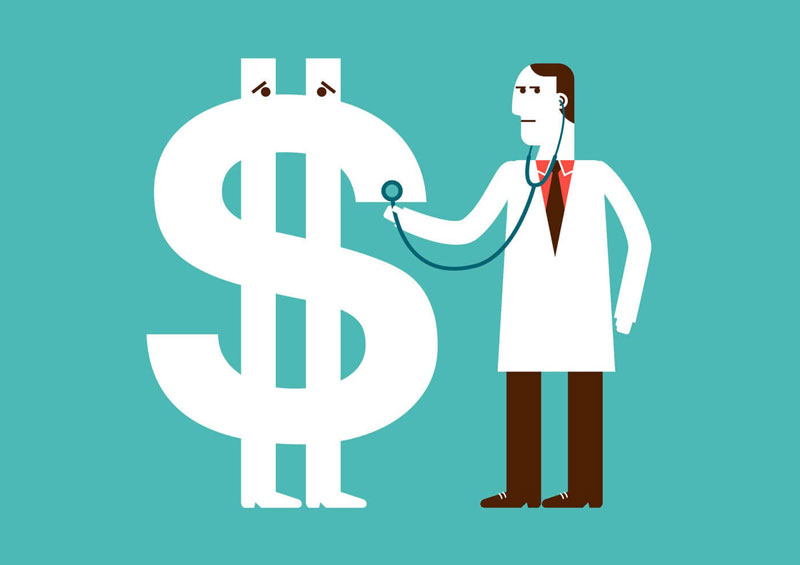What Is Causing the Increase in Healthcare Costs?
Nov 17, 2023 By Susan Kelly
Health care is a significant expense for most Americans. Therefore it should come as no surprise that they do so. There are several out-of-pocket expenditures involved with health and wellness in the United States, including expensive insurance premiums, deductibles, co-pays, and other charges.
Government policy is a contributor to growing healthcare expenses. Since their establishment, Medicare and Medicaid—programs that support those who lack health insurance—have allowed providers to raise fees.
Healthcare Costs in Total
Over the last few decades, healthcare prices in the United States have skyrocketed. Inflation-adjusted healthcare spending in the United States climbed by about a trillion dollars between 2009 and 2019, according to a report by the Peterson Center on Healthcare and the Kaiser Family Foundation.
What Is Causing the Increase in Healthcare Costs?

In a JAMA study, researchers looked at how five significant characteristics were linked to healthcare price increases between 1996 and 2013.
- Cost and intensity of service
- Increase in the human population
- Aging of the population
- The frequency with which a disease occurs
- Health care utilization
According to the authors, more than half of the rise was attributed to increased prescription medication prices. Another element that contributed to the cost increase was the care and the patient's health status.
Increasing Costs of Ambulatory Care
More than any other treatment category analyzed, outpatient hospital services and emergency department care saw a rise. The yearly cost of outpatient care has increased from $381.5 billion to $706.4 billion during the past decade. Over the same year, emergency department charges for all health disorders grew by 6.4 percent.
The Cost of Health Insurance Is Going Up

The average yearly premium for a family of four jumped from $15,545 in 2015 to $21,342 in 2020 for individuals having employer-provided health care coverage. Average unsubsidized family ACA premiums grew from $8,724 to $17,244.678 throughout the first three years of the Affordable Care Act's implementation.
Medicare and Medicaid's Escalating Costs
As a result of government programs like Medicare and Medicaid, the demand for medical services has grown, which has led to a rise in the cost of such services. The expense of medical treatment has also risen as chronic diseases like diabetes and heart disease have increased, particularly among the elderly. More than half of Americans have a chronic ailment, accounting for 85 percent of healthcare spending.
Higher Costs Paid Out of Pocket
Insurance costs are only a tiny part of the issue, though. Americans are spending more money out of their own pockets than before. Transitioning to high-deductible health plans (HDHPs) that impose out-of-pocket charges of up to $14,000 per family has increased healthcare expenditures significantly.
Because of employer-sponsored high-deductible health plans (HDHP), participants in those plans pay 20% of their premium, whereas PPO members pay up to 27% of their total compensation.
COVID-19 and Cost-Avoiding Patients
Cost-averse patients skip necessary medical care, which has been an issue for some time. It was discovered in a 2019 study by the Physicians Advocacy Institute that people were putting off medical treatment because they couldn't afford to pay for their HDHP deductible.
Concerns about the COVID-19 pandemic have prompted up to 50 percent of the population to delay or shun medical care, according to a poll by the Kaiser Family Foundation (KFF).
How Much Does It Cost to Get Tested for COVID-19?
COVID-19 was predicted to impact healthcare costs due to the rise in the number of people requiring testing, treatment, and care. There was a split among the experts on whether or not expenses would climb or reduce.
COVID may not significantly impact the trend of healthcare costs in the long run. A 5.4 percent annual growth rate is forecast for short-term spending, which is predicted to rise to $6.2 trillion by 2028.
Poor Efficiency and Transparency
It's impossible to ascertain the actual cost of healthcare because of a lack of transparency and underlying inefficiencies. Most people know that healthcare costs are rising, but it isn't easy to understand what you're getting for your money.
Fortunately, the Consolidated Appropriations Act of 2021 addressed the issue of healthcare transparency. Price and quality information will no longer be subject to gag restrictions due to this act's transparency provisions.
Non-Shocking Act
Another piece of CAA legislation, the No Surprises Act, is also set to take effect on January 1, 2022. It protects patients against surprise billing, a significant driver of healthcare expenditure growth.
Also included in the legislation is a ban on surprise medical and hospital bills, as well as protections against provider discrimination and external review in the case of certain surprise costs that are out of network or out-of-pocket limits.








